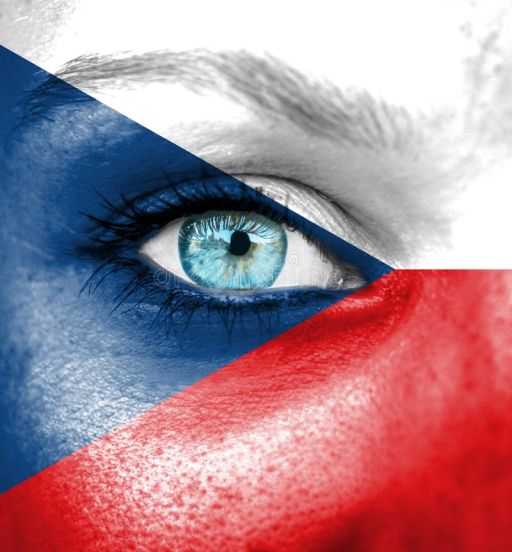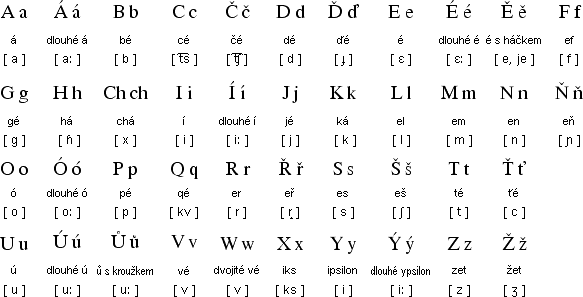Czech translation and translators from Czech to English
We do translations worldwide.
Price and cost for Czech to English and from English to Czech translation
Some companies and sites offer price from
0.03 cents per word.
For this price they do Google translation and Czech college students check the quality of the translation.
Some "translators from Czech" do not even inform you that they do automatic translation.
But when you try to order standard quality translation - they ask standard price -
20-50 USD/EUR/GBP per page with 250 words.
We do not fool our customers and provide best possible price.
 REQUEST A FREE QUOTE
REQUEST A FREE QUOTE
Delivery of translation
.PDF file with Czech translation certified by our translation agency or .doc file.
Hardcopy (printed on paper), printout, paper copy of CERTIFIED Czech-English or English-Czech translation can be mailed to any city.
Our translations from and to Czech are accepted by any commercial companies, government offices or public organisations.
We also provide translated documents from Czech to English:
- to municipalities and Town Halls to get marriage,
- to schools and universities,
- to immigration services.
Estimated delivery of translation Czech-English or English-Czech
12-72 Hours
About translators from Czech to English

I do English and Czech in all combinations of translation and interpreting.
I studied at Charles University in Prague, Czech Republic.
Program: English Language Oriented at Education — Czech Language Oriented at Education - double subject study.
Form of study: full-time.
The program combines theoretical instruction with the practical application of knowledge and skills.
I carry out certified and ordinary translations for the Institute of European Integration and dozens of government bodies, as well as for notary, law firms, legal advisers, higher educational institutions, translation agencies, as well as companies and individuals.
In addition, I certify the translations made by other translators and edit the Czech and English texts.
Thanks to the appropriate training, in addition to knowledge of the language, I have highly specialized terminology skills and knowledge of the translator profession.
In my activities I am guided by the principles of professional ethics, as well as the obligation to keep professional secrets.
Czech documents we translate to English
We translate any document issued in Czech Republic and any document in Czech:
Czech Driver’s Licence
Czech Marriage Certificate
Czech ID card and passport
Czech Birth Certificate
Czech Address Confirmation
Czech Death Certificate
Czech Police Clearance
Czech Degree Certificate
Czech Diploma
Czech Academic Transcript

Interesting facts about Czech language
1. Czech (Czech čeština) is spoken in Czech Republic by more than 10 million people.
2. Czech language is Bohemian - language of Bohemia, a region of today’s Czech Republic.
3. Some Czech words don’t have any vowels: Strč prst skrz krk - put your finger through your throat.
4. Czech distinguishes vowel length. When you see á, é, í, ó, ú, ů, and ý, pronounce them 1.75 x longer
5. Unlike English, Czech word order is very flexible, you can move words around like building blocks.
6. There are untranslatable words in every language. Czech is also famous for "lítost" — a word as a state of agony and torment created by the sudden sight of one’s own misery.
7. Czech language has no verb for the act of giving a hug.
8. Czech is the ONLY language in the world that uses "Ř".
9. Stress is always on the first syllable in Czech
Czech Alphabet:

The Czech alphabet consists of 42 letters.
However, letters g, q, w, and x usually do not appear in Czech words (by origin).
Czech (English Pronunciation
letter sound) example
A a (u) like in the word f
un
Á á (a) like in the word f
ather
B b (b) like in the word
bat
C c (ts) like in the word bi
ts
Č č (ch) like in the word
chat
D d (d) like in the word
dog
Ď ď (dy) like 'du' in
duel
E e (e) like in the word r
ed
É é (ai) like in the word p
air
Ě ě (ye) like in the word
yes
F f (f) like in the word
far
G g (g) like in the word
gap
H h (h) like in the word
hot
CH ch (ch) like in the word lo
ch
I i (i) like in the word f
it
Í í (ee) like in the word b
ee
J j (y) like in the word
yes
K k (k) like in the word
kit
L l (l) like in the word
lip
M m (m) like in the word
mat
N n (n) like in the word
nut
Ň ň (ny) like 'n' in o
nion
O o (o) like in the word h
ot
Ó ó (oo) like in the word d
oor
P p (p) like in the word
pin
R r (r) like in the word
rat
Ř ř (rž) like 'rg' in bou
rgois
S s (s) like in the word
sun
Š š (sh) like in the word
ship
T t (t) like in the word
top
Ť ť (ty) like 'tu' in
tune
U u (u) like in the word p
ush
Ú ú (oo) like in the word f
ool
Ů ů (oo) like in the word f
ool
V v (v) like in the word
vat
Y y (i) like in the word b
it
Ý ý (ee) like in the word b
ee
Z z (z) like in the word
zip
Ž ž (zh) like 's' in trea
sure
Qq, Ww, Xx in foreign words only
Pronunciation in Czech language
The acute accent letters (Á, É, Í, Ó, Ú, Ý) and Ů indicate long vowels. They have the same alphabetical ordering as their non-diacritic counterparts.
The hacek (ˇ) indicates historical palatalization of the base letter. The letters Č, Ř, Š, and Ž currently represent postalveolar consonants and are ordered behind their corresponding base letters; while Ď, Ň, Ť represent palatal consonants and have the same alphabetical ordering as their non-diacritic counterparts.
Stress is always on the first syllable in Czech; a monosyllabic preposition (if any) counts as the first syllable of the following word. A vowel in any syllable can be either long or short. The length of Czech vowels is completely independent on the stress.
ě = [je] after p, b and v; [e] after d, t and n (which become palatalized: ď, ť, ň). After m, ě = [mɲe], but it is pronounced [mje] in some regions.
ú in normally used at the beginning of words, while ů is used elsewhere, except in interrogatives and loan words.
Word-final voiced consonants are pronounced unvoiced, even in loan words, e.g. chléb [xle:p], jazz [ʤes], rub [rup].
Grammar in Czech language
The noun cases are typically referred to by number, and learned by means of the question to which they are the answer. There are seven cases in Czech: Nominative, Genitive, Dative, Accusative, Vocative, Locative (also known as Prepositional) and Instrumental.
The case used depends on a number of variables, and for foreigners can be very confusing.
The numbers are singular, plural and remains of dual. The dual number is used for only several parts of the human body, of which each person has two: hands, shoulders, eyes, ears, knees, legs, breasts. In all but two of the above body parts (eyes and ears) the dual number is only vestigial and affects very few aspects of declension (mostly the genitive and prepositional cases).
Genders are masculine animate, masculine inanimate, feminine, and neuter. Masculine animate is used only to describe living things (note: plants are not considered animate in Czech noun declension).
Order translation now
![]() CY +357-96-38-39-40
CY +357-96-38-39-40
![]() UK +44 754-373-15-03
UK +44 754-373-15-03
 WhatsApp
WhatsApp
 Request
Request
 Chat
Chat
 info@24glo.com
Contacts
info@24glo.com
Contacts
![]() CY +357-96-38-39-40
CY +357-96-38-39-40
![]() UK +44 754-373-15-03
UK +44 754-373-15-03
 WhatsApp
WhatsApp
 Request
Request
 Chat
Chat
 info@24glo.com
Contacts
info@24glo.com
Contacts
 REQUEST A FREE QUOTE
REQUEST A FREE QUOTE


